[Book Review] America’s Two Cold Wars: From Hegemony to Decline?
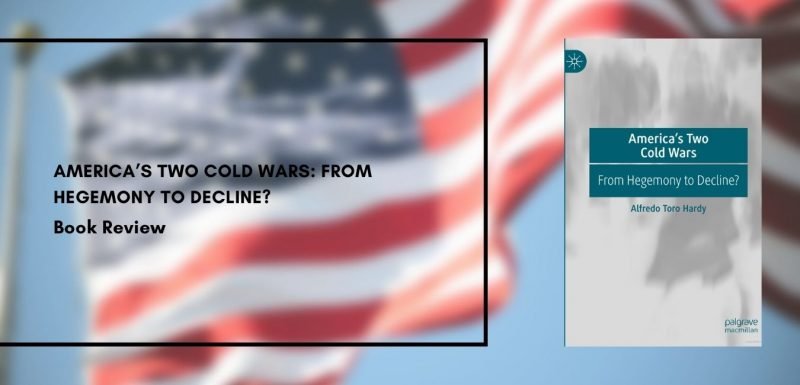
This book, written by former Venezuelan Ambassador, scholar and prolific author Alfredo Toro Hardy, compares America’s forty-plus years’ of Cold War with the Soviet Union with its emerging one with China. Two basic questions are therein formulated: How different as a strategic competitor was the Soviet Union to current China? How different is the United States of today to its former self when confronting the Soviets? After its first two chapters provide a general overview to the USSR’s collapse and China’s emergence, the book engages itself in in trying to answer the aforementioned questions.
From ideology to efficiency
Although multifaceted, the Cold War between the Soviet Union and the United States had ideology as its core underpinning element, something for which America was particularly well suited. Having been the birthplace of liberal democracy and its most devoted preacher, it was easy for it to reclaim the mantle of leader of the “Free World”. Particularly so, after Woodrow Wilson endowed its foreign policy with a missionary impulse in that direction. On the other side of the fence, the Soviet regime also embodied an ideology that aimed at global expansion. This ideological contest was not only clear-cut, but unmistakably favourable to the United States. Freedom, notwithstanding the contradictions that the “Free World” notion entailed, was indeed an arrow directed to the Achilles Heel of a totalitarian system.
This emerging Cold War is not based on ideology. To begin with, America’s liberal narrative has lost its credibility as it’s being seriously contested within the country itself. Moreover, all that matters for China since Deng’s time is that the cat catches mice. Meaning, that the system delivers. Hence, not only America’s liberal order has become an ideological nonstarter, but what seems to matter in this rivalry is the capability shown by each to outmatch the other in terms of results. Efficiency, thus, becomes the defining element of the new Cold War.
Contrary to the comparative advantage enjoyed by the United States in its ideological contest with the Soviets, the country is badly prepared for a competition framed in efficiency terms. Indeed, America fares poorly in numerous areas in relation to other developed world countries, as many of its domestic problems have been left unchecked for a long time. Conversely, during a bit more than four decades China has shown the most impressive historical record in providing results. In Kevin Rudd’s terms, what has happened in China during this period of time is the equivalent to the English Industrial Revolution and the global information revolution combusting simultaneously and compressed not in 300 years but in a few decades.
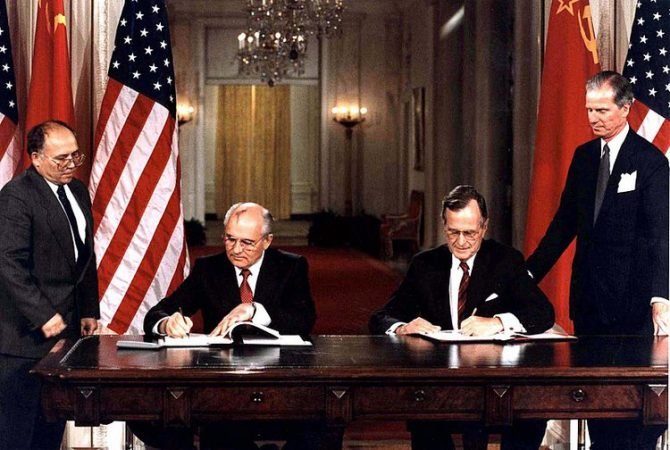
From hegemony to the squandering of alliances
In the final phase of World War II or subsequently, a network of multilateral organizations, initiatives and alliances began to take shape under America’s auspices. Through this network, the U.S. positioned itself at the head of a potent hegemonic system where its legitimacy was sustained by consensual acquiescence. The U.S.’ spectrum of allies was as diverse as was its capability to articulate the system on behalf of its Cold War’s aims. On the other side, the Soviet Union gave rise to a much more modest system of alliances, initiatives, and common institutions. Although non-alignment defied both sides, Washington’s network remained the epitome of political, military and economic strength.
With the collapse of the USSR, the whole community of nations had to find arrangements under the U.S.’ hegemonic system, which henceforward became global. Incomprehensible under the light of common sense, George W. Bush proclaimed the futility of multilateral cooperation, which in his view constrained the freedom of action to which U.S. power was entitled. This raw unilateralism gravely weakened a system that had served Washington exceedingly well, while eroding the country’s standing within it.
Although the possibility for America to redeem its standing and credibility was well underway during Obama’s term, Trump’s combination of unilateralism and isolationism cut short that possibility. His “dog eat dog” approach to foreign policy ended up by shattering the trust in U.S.’ leadership. America’s allies are finding exceedingly difficult to tie its future to a country so prone to zigzags and extremes. Particularly so, as in a few years’ time Washington could be inaugurating a new Trump administration. The book thus stated, that the United States is entering its Cold War with China with few true allies and after having squandered one of its biggest assets: its impressive network of alliances.
The book could not have anticipated, though, the reinvigoration of the Atlantic Alliance resulting from Russia’s invasion to Ukraine. However, it referred to the geopolitical bloc in the making between China and Russia, stating that the U.S. should have never allowed those two countries to coalesce in the way they did. Since 2008, when Russia made clear that it would not accept further Western encroachments near its borders and China began its assertiveness towards the U.S., Washington should have approached the lesser of the two competitors trying to defuse tensions and build bridges. As things stand, in the best-case scenario Russia becomes a huge distraction in relation to America’s main rivalry, whereas in the worst case one, these two competitors might coordinate their actions.
At the same time, China has undertaken a multilateral institutional building process that recalls the efforts of America in the final months or subsequent years of WWII. As in the U.S. case, this aims at giving shape to a favourable international institutional architecture, one essentially oriented towards the economic sphere. This not only neutralises to a significant extent China’s nationalistic excesses but allows it to acquire a huge array of stakeholders in its future.
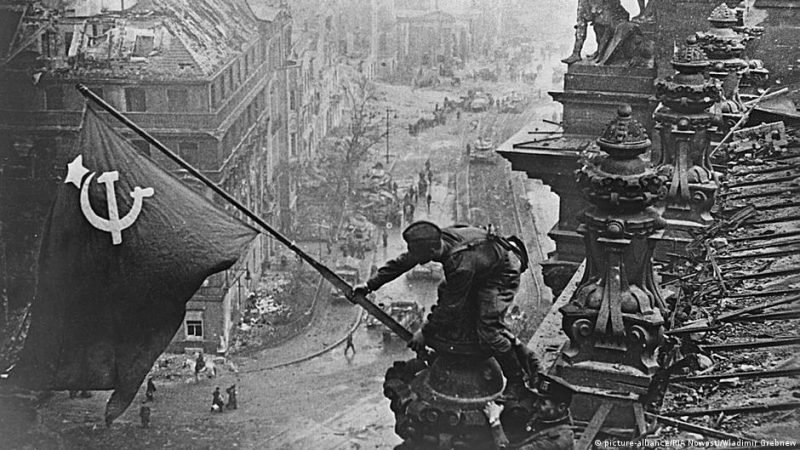
From strategic consistency to zigzagging
The two decades that succeeded the end of WWII represented the golden age of America’s foreign policy. It was a highly rational period of time where consistency prevailed. A group of rules of the game and conceptual bases became associated with this period. At its centre, there was a fundamental guiding strategy: The containment of the Soviet Union’s expansionist impulse.
From 1965 onwards, when the Vietnam War turned America upside down, its foreign policy system became dramatically shaken. Not everything, though, was overwhelmed by the emerging tumult. Although it became more difficult to maintain consistency in foreign policy matters, Washington certainly retained the capability to do so. This consistency proved fundamental in confronting the Soviet Union with success.
Today, America’s foreign policy consistency is inexistent. In the past, America was vertically split by its multiple divides, which was coherent with the anti-majoritarian nature of its system as constructed by its Founding Fathers. Nowadays, however, partisan identities have merged with those multiple divides, generating two overwhelming majorities that coexist side by side demonizing each other. An overwhelming horizontal fracture is detaching not only the political system itself but society as a whole. Foreign policy zigzagging becomes thus unavoidable, as Republicans and Democrats inhabit in different foreign policy planets.
Although bashing China is one of the very few foreign policy issues where Republicans and Democrats can agree, a master plan on how to confront that country is totally lacking. Inhabiting two foreign policy planets doesn’t help much in defining such master plan.
China stands in a completely different ground. Beijing has a clear national project and a well-rounded foreign policy, aimed at providing support to the materialization of that project. Even more, its geopolitical ambitions are more localized, interconnected and, in most cases, close to home, all of which helps in preserving focus. This, in turn, is supported by its economic objectives, which include transforming China in the epicentre of an Asian led global economic order, while attaining world’s technological leadership. More broadly put, China marches towards its perception of its destiny – becoming the world’s number one power by 2049, the centenary of the People’s Republic.
China’s capability to implement its foreign policy strategy is closely linked to Xi Jinping’s leadership. Although his autocratic drive derailed a well-stablished succession model, it has provided greater unity to the party, civilian control over the military and reconnection between party and population.
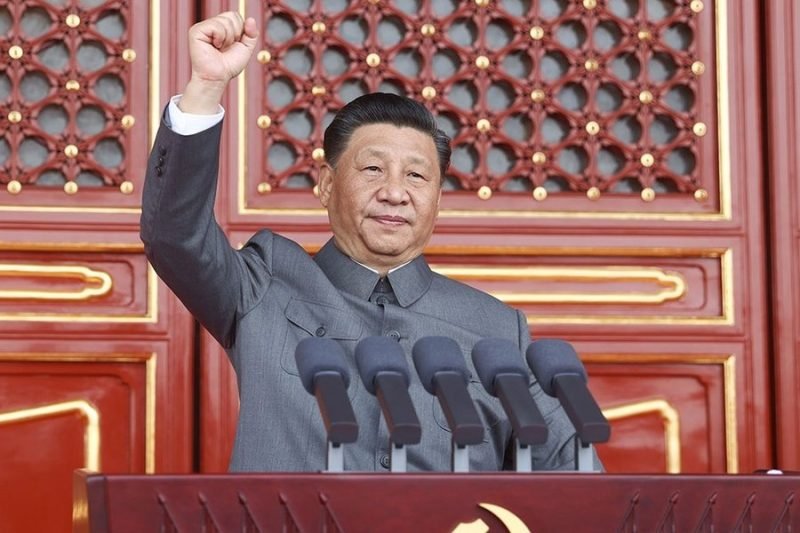
From economic high ground to economic lowland
At the end of the 1970s, the Soviet Union was sustaining a defence budget comparable to that of the United States, but from a GDP base that was a fraction of America’s. Moreover, while the U.S.’ economy was highly diversified, the Soviet one was exceedingly dependent on its oil exports, making its defence budget contingent on an inherently volatile raw material.
As if that was not enough, the United States was able to offset the Soviet Union’s military by maintaining a technological edge. This translated into forcing the Soviets into even bigger expending to compensate for the technological gap. On top, as the two superpowers competed on a global scale, Moscow had to multiply its expenditures to provide military support in different places of the world.
The USSR’s quagmire multiplied upon Ronald Reagan’s arrival to office. He not only sustained Carter’s decision to put an end to détente but went much further: Rolling back communism all around the world, attempting to make nuclear-armed missiles obsolete by developing a Strategic Defence Initiative and pursuing regime change in Moscow itself. Countering an offensive of this magnitude would have required an economic strength that Moscow was far from possessing. Simply put, the Soviets were pushed to the ropes by bankrupting its economy.
China is a different category altogether. It accounts for twenty-five percent of the global industrial output and contributes with around one-third of the world’s economic growth. In a few years’ time, it will surpass America’s GDP in absolute terms, while it already did so in Purchasing Power Parity. After 2030 it is estimated that a gap will begin accruing on China’s behalf who, by mid-century, could attain a GDP three times larger than that of America. Hence, China’s possibility of outspending U.S. military budgets at will.
However, without having attained economic supremacy and still spending much less in defence than the U.S. does, China has already developed the capability to maintain America’s larger defence budgets and superior military strength at bay. This is being obtained by maintaining a technological edge in asymmetric weapons; by developing a retaliatory nuclear strike, within a minimum deterrent nuclear strategy, susceptible of inhibiting America’s first use of its vastly superior arsenal; and by concentrating the bulk of its armed forces close to home within an area denial strategy, at counter-current with America’s diffusion of its military forces around the world.
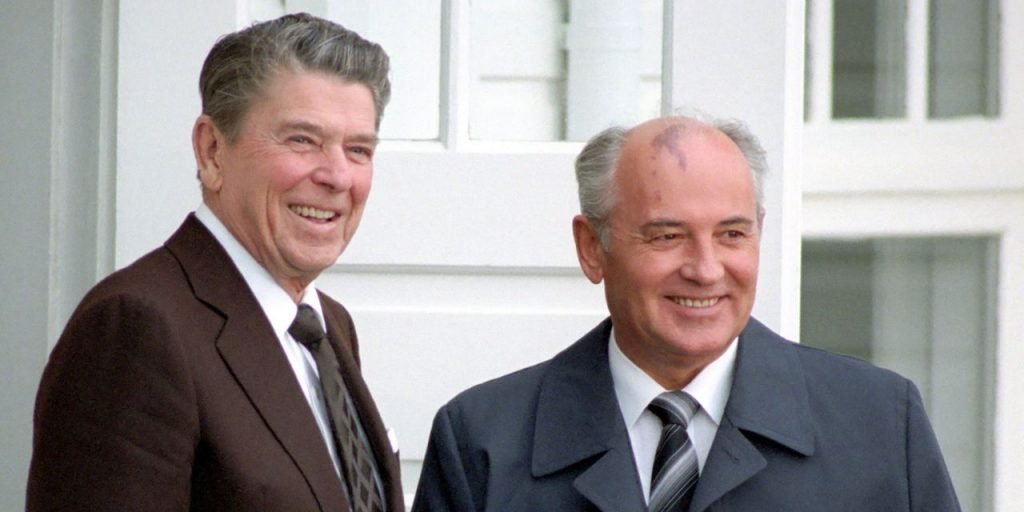
From reasonable containment to unattainable containment:
The U.S. emerged from WWII as the richest and most powerful nation in the world, which should have translated into a time of supreme confidence on the country’s international towering presence It was, paradoxically, a moment of much uncertainty and insecurity, as Americans have become conscious of the extent of its interconnection to the rest of the world. They understood well, indeed, that only by way of an international environment favourable to their values and interests protection could be found. In that sense, their fears were directed to an aggressive Stalin, whose country had emerged from the war as a military juggernaut and which seemed ready to exploit global instability on its behalf.
The U.S.’ most articulated response to that fear came by way of its strategy of containment to Soviet expansionism. A patient, systematic and long-term containment process. However, as Stalin understood that no new gains where possible in Europe beyond the “Iron Curtain”, Soviet expansionism and American containment moved into the so-called Third World. Frictions between the two superpowers were thus removed from the most geopolitical combustible region of the world. This substantially reduced the risk of a direct confrontation between them. With the notable exceptions of Berlin 1961 and Cuba 1963, both countries avoided geostrategic charged scenarios.
In the end, containment proved to be extraordinarily successful, attaining the goal that it had pursued since its inception. Having attained its end with the Soviets, nothing seems more natural for America than trying to replicate this policy in relation to China as well. And, indeed, even if not framing it as such, Obama, Trump, and Biden have followed the containment road in relation to China. Although this has been done without any kind of master plan and amid multiple ups and downs along the road.
However, this a far from enough. Geopolitical feasibility is fundamental. But, is it viable to indefinitely constrain China to a secondary role in an area which is of geostrategic priority to it? Is it possible to do so when its layered defence-in-depth’s control of the area contrasts with the huge distances existing from the United States? Moreover, how to contain a force whose main objective is precise to deter penetration by others?
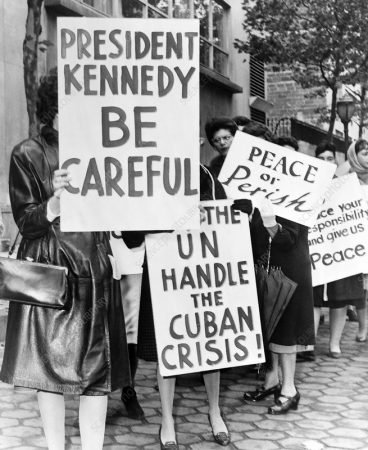
In sum
During its first Cold War, the United States had the wind on its back, with all the right configuration of elements supporting it. The playing field was the right one: the core underpinning element, ideology, was its biggest strength. Its support base was large: an extensive network of alliances reinforced its position. The consistency of purpose was clear cut: both domestically and externally it followed a clear road map. The economic correlation between the parties clearly leaned on its behalf: it inhabited in the economic high ground. The final objective was attainable: containment was a reasonable and plausible strategy. These factors allowed for a successful outcome.
In this emerging Cold War, the opposite happens, with America confronting the wrong configuration of factors. The playing field does not favour it as the core underpinning element is its main weakness: efficiency. The support base is faltering, as true allies are scarce and its credibility among them has reached a historical low. The consistency of purpose is weak, as its political parties inhabit different foreign policy planets and its society is utterly polarized (and although it still exhibits a China’s-bashing common denominator, this falls short from an articulated foreign policy). The economic correlation puts it in a flickering place, as in a few years time the U.S. will be sliding into the economic lowlands. The final objective is unattainable as containing China doesn’t look as a reasonable proposition.
On the other hand, China can excel in an efficiency-oriented contest; its international support base is wider; its focus and consistency of purpose are strong; its economic strength will keep increasing with every passing year; and the notion of its containment doesn’t seem plausible. As a result, while the first Cold War ended up projecting the United States to the pinnacle of the international system, this new one can only propitiate its dwindling. The U.S.’ two Cold Wars might thus signal its transit from pre-eminence to decline.
With such an inauspicious outlook, common sense would advise that the United States explore alternatives to Cold War with China. Avoiding a zero-sum confrontation, accepting the inevitable emergence of China and looking for constructive cohabitation, would seem reasonable propositions. However, even if the U.S. would arrive to this conclusion it is clear that you need two for tango. China might, indeed, be an unwilling dance partner as it perceives itself to be precisely at the time of a big power pushover. That is, amid “great changes not seen in a century” and when “time and momentum” are on its side.


















